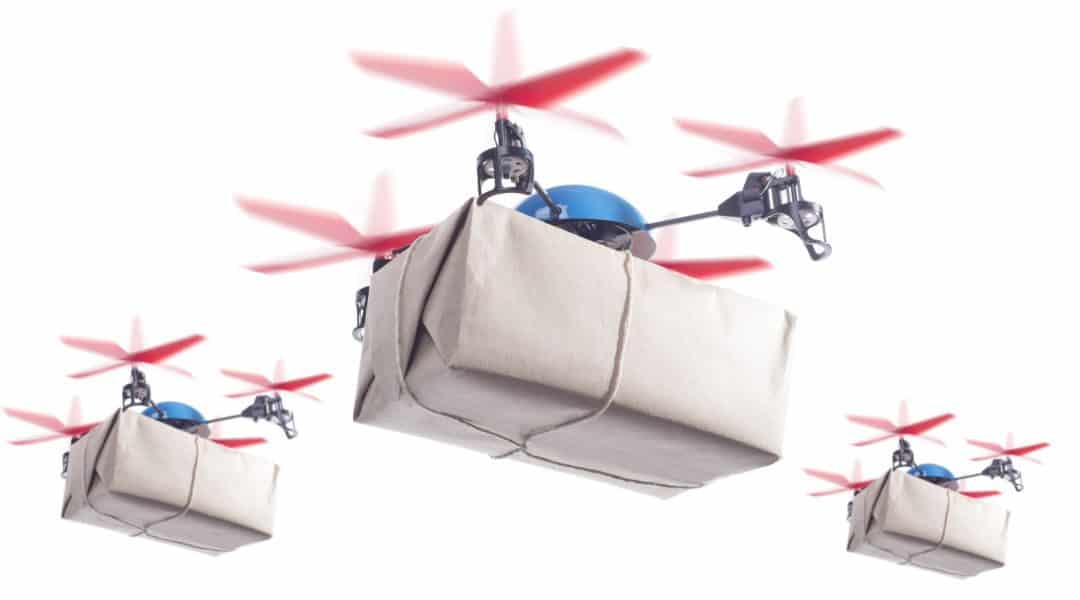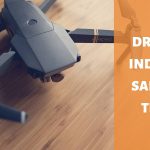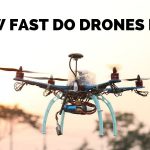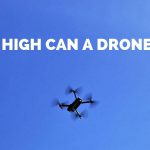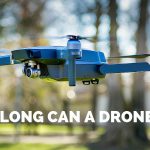In December 2013, Amazon’s CEO Jeff Bezos announced that they are developing an autonomous drone package delivery system that will be fully operational by 2015. However, it was obvious to anyone in the drone community that the Federal Aviation Administration (FAA) was not impressed with the concept of self-piloted robots flying through densely populated areas, since this is an obvious safety concern.
Unmanned aerial vehicles (UAVs), or drones, are small aircraft that are piloted remotely from the ground or follow an autonomous pre-programmed route to a specific target. Historically, drones have been used for military operations. However, with the further development of drone technology, they are applications has been expanded to include disaster relief, medical aid, and parcel delivery. The unique ability of drones has allowed it to fill a niche in the modern package delivery system. The improvements of stability systems, simpler piloting, reduced mass, lighter system components, and onboard flight computers has led to further commercial interest in drones.
However, the biggest barrier to the full realization of commercial drone use are the regulatory bodies that govern and allow the use of drones and similar technologies.
Drone Package Delivery Regulations
In the USA, the FAA has repeatedly denied easing of regulations for drone package delivery companies who are currently lobbying to have the regulations changed. The main argument put forth by these companies is that it would reduce transportation costs. The FAA hasn’t been completely inflexible since in June 2016 it changed the rules to allow a broad range of commercial drone applications for drones under 55 lbs, but with certain restrictions. The drone must be operated by an operator who has passed a written test, and is at least 16 years of age. The drones can be flown at a maximum altitude of 400 feet, during the day, and within line of sight of the pilot. The line of sight restriction is the main regulation that prevents the implementation of drone package delivery, since autonomous piloting is needed to make this system feasible.
However, Amazon has made progress with its drone package delivery system. In July 2016, an agreement was reached with the British government that removed enough regulations to allow Amazon to test drone delivery technology. The new deal allows a drone to flown past line of sight of the pilot to test obstacle avoidance and autonomous navigation technology. The drone size restriction has also been eased allowing drones to carry packages that weigh up to 5 lbs, which represents the majority of the packages that Amazon delivers. The drones are still restricted to fly under 400 feet.
The British drone regulations are not that different than those imposed by the FAA. Aside from the special exceptions granted to Amazon, the UK regulations require that drones are not operated within 150 feet of buildings or people. Also, drones need to remain within line of sight of the pilot and a maximum distance of 500 meters. Similar to the FAA, the line of sight constraint prevents the further development of drone package delivery.
Companies such as Amazon and Google demonstrated prototype delivery drone technology that can eliminate the need for shipping by the postal service, or by UPS. However, company executives state that the main road block is a set of ambiguous regulations. Governments are comfortable with companies using drones for search and rescue, crop monitoring, aerial photography, and inspection of infrastructure. But drone delivery is where governments draw the line.
These restrictions are not necessarily about safety. In the USA, the Teamsters labor union has lobbied against letting pilots control fleets of multiple drones, thereby reinforcing the requirement to have one pilot for each drone. This goes contrary to the business model of drone package delivery. This is only cost effective if the humans are taken out of the delivery process.
The question of drone package delivery has mostly focused on the technical aspects of drone technology. But do the economics work?
Drone Package Delivery Economics
The last mile problem is the most difficult to address in terms of the logistics of product transportation. The final leg of product delivery from hub warehouses to homes and offices has the highest complexity and cost. Online shopping has only served to amplify this problem. Last-mile delivery in developing countries are highly affected by infrastructure failings due to the lack of robustness in these regions.
The problem of the last mile delivery is primarily driven by the factors of route density and drop size. Route density is the number of deliveries you can make on a given route, and the drop size is the number of packages delivered at one location. An examination of these factors leads to an understanding of how drone delivery presents a potentially viable technological solution to this problem. It is claimed that the use of autonomous drones can rapidly deliver packages, while reducing wait times and minimizing human labor costs. The technological claim is believable, but the economic argument is somewhat doubtful.
Drones do not perform well against the metrics of the last mile delivery. The existing delivery drones can only carry one package at a time, make the delivery, and return to the main base where it needs to recharge its batteries before it is ready for its next run. The cost per delivery needs to be kept low to make a given delivery scheme viable. To do this you need to make multiple deliveries over a given distance or time. Also, delivering multiple packages at one location reduces the delivery cost per package.
However, this is only speculative since there have not been any extensive studies of the cost of drone delivery. The few studies that have taken place indicate that drone delivery has the potential for cheaper and faster delivery. This is true only if the product warehouse is close enough to the consumer to allow for 30-minute delivery.
Several companies are developing the technological and economical models needed to make drone delivery viable.
Amazon Prime Air
The goal of Amazon Prime Air is to use multirotor drones to autonomously fly packed to customers within 30 minutes of placing an order. To qualify for this delivery method, the packaged to be delivered must weigh less than 5 lbs, be small enough to fit in the drone payload compartment, and must be within range of an Amazon center.
To further the development of drone delivery, Amazon has proposed flight corridors that are similar to concepts presented by NASA and Google. The region below 200 feet would be designated as a low speed localized traffic region, while a quick transportation corridor would be designated for the 200 to 400 feet band. Altitudes between 400 and 500 feet would be designated as no-fly zone for drones.
Google Project Wing
This is the code name for Google’s secret drone package delivery service that is supposed to be operational by 2017. The first announcement of this concept was released in a 2014 Youtube video, but since then there has not been any further details released. A recent patent filing by Google does present some further details regarding how this delivery system would work.
The patent outlines mobile delivery receptacles that work in coordination with the delivery drones. The mobile delivery receptacles are wheeled vehicles that use infrared beacons or lasers to locate and guide the drones down to ground level. The package is transferred, and the vehicle moves it to a secure location. The customer can then choose to pick the package from the location, or have it delivered by conventional means.
Flirtey Drone Delivery
In March 2016, both Amazon and Google were upstaged by drone startup Flirtey who successfully delivered a package in Nevada to a residential location. This was the first autonomous delivery bya drone in the US.
The programmed route was specified using GPS, and a standby pilot was available, though not needed. The FAA has designated six states, which Nevada is one, for the testing of unmanned drone systems.
Drone Package Delivery Summary
The concept of drone delivery, as innovative as it is, has several hurdles to overcome in order to become a reality.
FAA Regulations
The biggest concern that the FAA has with regards to commercial drone delivery is not the safety aspect, but privacy concerns. Several states have already passed legislation preventing commercial drone use for surveillance data gathering.
Safety
It is easy to imagine how drones could cause injury to humans while flying low and delivering packages. Rotor guards are an option, but a further problem is when several drones are flying near each other around a busy apartment building. Drone companies need to develop means to perform delivery while keeping people safe.
Theft and Hacking
Current drone technology does not have longstanding legacy, and is vulnerable to hacking attacks. Using a fake GPS signal, it is possible to take over the control of a delivery drone.
While the concept of delivery drones is interesting and exciting, the infrastructure and economics to support drone delivery do not currently exist. Further developments need to be made in order for drones to address the last mile delivery problem.
References
- It’s a Bird, It’s a Plane, It’s a Delivery Drone
- The Dream of Delivery Drones is Alive
- The Economics of Drone Delivery
- Amazon and Google’s drone delivery plans hit snag with new US regulations
- Drone Drop-Offs at Your Door Won’t Happen until the FAA Delivers
- This is How Google’s Project Wing Drone Delivery Service Could Work
- First Time Ever: Package Delivered By Drone in Small Nevada Town

